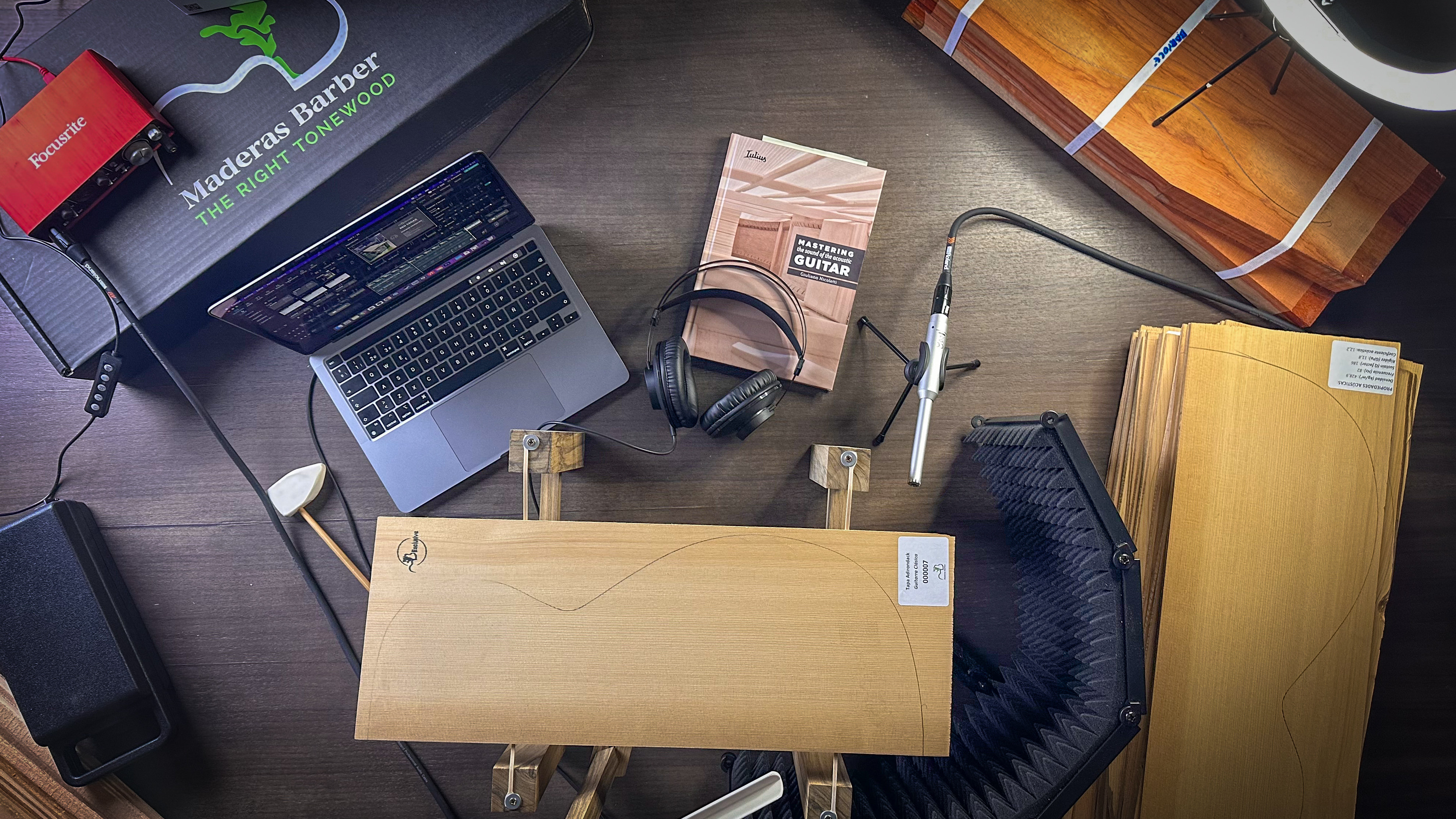- News
- 10 likes
- 2622 views
- 0 comments
Comments (0)
No comments at this moment

But that's not all, we will also help you to analyse that sound sample and understand its values to choose the piece that best suits the guitar you want to build.
Are you thinking of making a classical or acoustic guitar, is the musician playing fingerstyle or plectrum, will it be a concert guitar with a sound system or for recording studios?
Join us in this article and we will explain everything about this new system.
In our commitment to innovation and recognising the obvious importance of sound in guitar making, we have decided to take things a step further by offering a selection of 60 tops with sound samples of each piece. This feature is unprecedented in the industry and gives our customers a new dimension of choice and customisation in their guitar building projects.
In this first release, we have Alpine Spruce, Red Cedar and torrefied Adirondack pieces available.
We share with you some samples from the catalogue, so that you can see the acoustic peculiarities offered by these pieces of wood for guitar tops.
To ensure the quality and accuracy of this data, all sound samples are analysed using Giuliano Nicoletti's TPC software. This advanced analysis system provides detailed data on the acoustic properties of each piece, allowing you to select them according to their intended use in the guitar's construction.
A first way to use this data would be to read the radiation coefficient as an index of the overall quality of the piece.
If you want to go further, it is necessary to evaluate the stiffness and sustain of the piece in order to adapt the top to each specific application. The general guidelines for evaluating and selecting the properties of the top are summarised
in the following table, comparing the parameters of Radiation Coefficient, stiffness and Q-factor. Grouped into low, medium and high indicators.

The suggested classification of the parameters of MB Sound woods should be considered as a starting point; experienced guitar builders may have different preferences or needs and the system will grow as we continue to add samples to our database.
The density of the soundboard is the parameter most responsible for the Sound Radiation Coefficient, and together with the stiffness it defines the speed of sound. It should be low for sensitive guitars, medium for flatpicking guitars, high for preamplified instruments to be played live (to reduce sensitivity to feedback).
The stiffness of the soundboard should be high for flatpicking or preamplified instruments (to reduce sensitivity to feedback), medium for fingerpicking instruments, low for small-bodied instruments.
The Q factor of the soundboard should be high for fingerpicking or studio instruments, medium-low for flatpicking or preamplified instruments to be played live (to reduce sensitivity to feedback).
The Radiation Coefficient is an indicator of the response capability of the top; it should be high for fingerpicking instruments, medium for flatpicking instruments and low for preamplified instruments to be played live (to reduce sensitivity to feedback)
By understanding and evaluating the tonal properties of wood, luthiers can optimise the design and construction of their instruments. With a focus on density, stiffness, acoustic radiation coefficient, frequency and sustain, guitars can be built that are not only visually stunning, but also exceptional in terms of tone and response.
Whether you are an experienced luthier or an amateur enthusiast, our MB Sound woods offer you the opportunity to build a truly unique guitar. With the perfect combination of quality, innovation and customisation, we are here to help you make your handcrafted dreams come true.
Don't settle for less when it comes to building your guitars.

Save products on your wishlist to buy them later or share with your friends.

